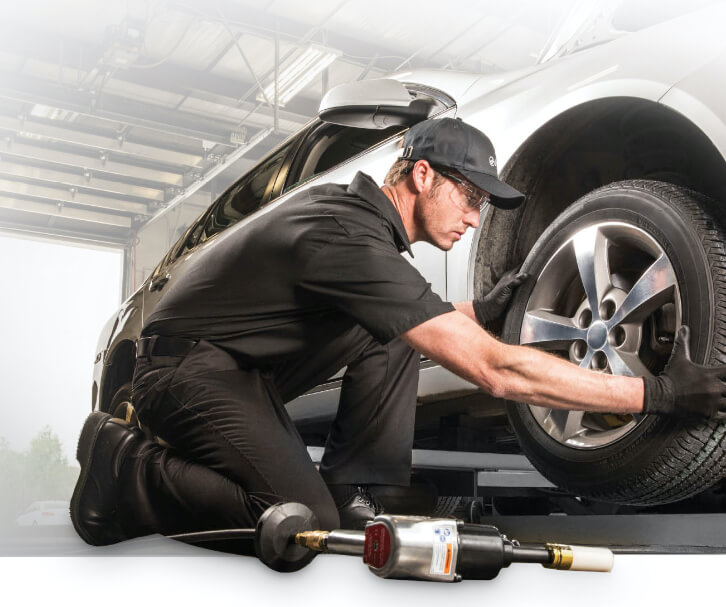Tire Solution: The Influence of Climate Condition
When it concerns making sure optimum efficiency and safety when driving, recognizing the impact of climate conditions on tire service is critical. From scorching warmth to icy roadways, each weather condition component can substantially affect tire functionality and general driving experience. By diving right into the effects of varying climate condition on tires, motorists can obtain valuable understandings that might enhance their car's performance and longevity. In this conversation, we will certainly check out the detailed relationship between weather and tire solution, shedding light on the importance of weather-specific tire maintenance practices and considerations.
Warm and Tire Performance
When revealed to high temperatures, tires experience modifications in efficiency that can substantially influence automobile safety and security and handling. The warmth created from long term driving or hot climate conditions creates the tire rubber to soften, leading to reduced tread life and boosted wear.

Cold Climate Impacts
Cold weather condition conditions can have a considerable influence on tire efficiency and safety and security. In cool climate, tires may additionally lose air stress extra swiftly, which can affect dealing with and gas performance.
To mitigate the impacts of cold climate on tires, it is crucial to consistently check tire stress and inflate them to the maker's recommended levels. Making use of winter season or all-season tires made for cold weather problems can also enhance grip and grasp on icy or snowy roadways. Proper tire maintenance, consisting of normal assessments for wear and damage, ends up being much more important throughout colder months to guarantee ideal performance and security.
Rainy Conditions Effect
Tires with damaged treads are a lot more susceptible to hydroplaning, where a layer of water develops up between the tire and the road surface, leading to loss of grip. To battle this, vehicle drivers need to on a regular basis inspect their tires for appropriate walk depth and consider investing in tires especially developed for damp conditions.
In addition, rainy climate can also reduce exposure, making it challenging for motorists to see the road ahead plainly (GMC Tire Service). In such conditions, it is necessary to adjust driving speeds accordingly and maintain a safe adhering to distance to enable sudden quits. Effectively filled with air tires can additionally aid in preserving control on wet roadways by offering better handling and grasp
Snow and Tire Safety
Snow-covered roads present special difficulties for motorists, stressing the value of appropriate tire option and maintenance. When driving in snowy problems, having the right tires can make a significant distinction in safety and security and efficiency. Wintertime tires are created with unique rubber compounds and walk patterns to supply better traction on snow and ice contrasted to all-season tires. The deeper treads and sipes of winter season tires aid grip the road much better, lowering the risk of slipping and sliding.

In addition, chauffeurs need to think about mounting tire chains in extreme snowy problems. Tire chains supply extra traction by gripping the snow and ice, boosting stability and control. Nonetheless, it is very important to comply with manufacturer guidelines when utilizing and installing tire chains to stop damage to the tires and automobile. By choosing the ideal tires, maintaining proper rising cost of living, and taking into consideration extra traction help like tire chains, motorists can boost their security when navigating snow-covered roads.
Weather-Related Tire Upkeep
Weather-related tire upkeep incorporates a variety of methods intended at making certain optimum tire feature and durability in different weather circumstances. One useful site crucial aspect of weather-related tire upkeep is tire stress law. Examining tire tread regularly and replacing tires when tread wear reaches a specific depth is important for preserving traction and security in damaging weather.
Final Thought
Finally, climate condition have a substantial effect on tire performance and safety and security. From warmth affecting tire stress and wear to cool weather condition lowering traction, it is vital to take into consideration the weather when keeping and using tires. Wet problems can lower grasp and cause hydroplaning, while snow can boost the threat of mishaps if tires are not appropriately outfitted. Weather-related tire maintenance is critical in making sure optimum efficiency and security when driving.
In this conversation, we will certainly discover the elaborate connection in between weather conditions and tire service, losing light on the relevance of weather-specific tire maintenance techniques and considerations.

 Dylan and Cole Sprouse Then & Now!
Dylan and Cole Sprouse Then & Now! Patrick Renna Then & Now!
Patrick Renna Then & Now! Brandy Then & Now!
Brandy Then & Now! Christy Canyon Then & Now!
Christy Canyon Then & Now! Mike Smith Then & Now!
Mike Smith Then & Now!